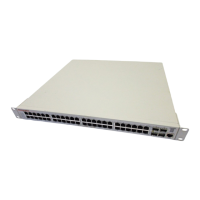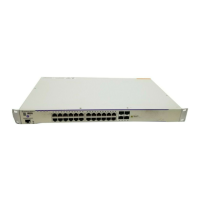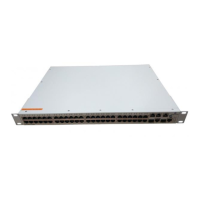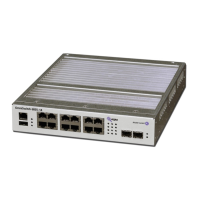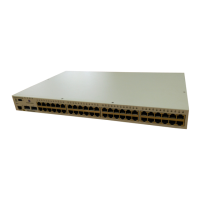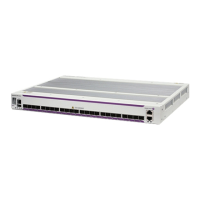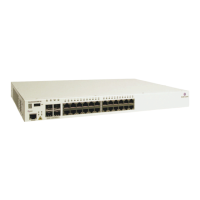Configuring VRRP VRRP Overview
OmniSwitch AOS Release 8 Network Configuration Guide December 2017 page 23-6
VRRP MAC Addresses
Each virtual router has a single well-known MAC address, which is used as the source in all periodic
VRRP advertisements sent by the master router, as the MAC address in ARP replies sent by VRRPv2, and
as the MAC address in neighbor advertisements sent by VRRPv3 (instead of the MAC address for the
physical VRRP router).
The VRRPv2 (IPv4) address has the following format:
00-00-5E-00-01-[virtual router ID]
The VRRPv3 (IPv6) address has the following format:
00-00-5E-00-01-[virtual router ID]
ARP Requests
Each virtual router has a single well-known MAC address, which is used as the MAC address in ARP
instead of a VRRP router's physical MAC address. When an end host sends an ARP request to the master
router’s IP address, the master router responds to the ARP request using the virtual router MAC address. If
a backup router takes over for the master, and an end host sends an ARP request, the backup will reply to
the request using the virtual router MAC address.
Gratuitous ARP requests for the virtual router IP address or MAC address are broadcast when the
OmniSwitch becomes the master router. For VRRP interfaces, gratuitous ARP requests are delayed at
system boot until both the
IP address and the virtual router MAC address are configured.
If an interface IP address is shared by a virtual router, the routing mechanism does not send a gratuitous
ARP for the IP address (since the virtual router will send a gratuitous ARP). This prevents traffic from
being forwarded to the router before the routing tables are stabilized.
ICMP Redirects
ICMP redirects are not sent out over VRRP interfaces.
VRRP Startup Delay
When a virtual router reboots and becomes master, it may become master before its routing tables are
populated. This could result in loss of connectivity to the router. To prevent the loss in connectivity, a
delay is used to prevent the router from becoming master before the routing tables are stabilized.
The default startup delay value can be modified to allow more or less time for the router to stabilize its
routing tables.
In addition to the startup delay, the switch has an ARP delay (which is not configurable).
Note. Duplicate IP address/MAC address messages may display when a backup takes over for a master,
depending on the timing of the takeover and the configured advertisement interval. This is particularly true
if more than one backup is configured.

